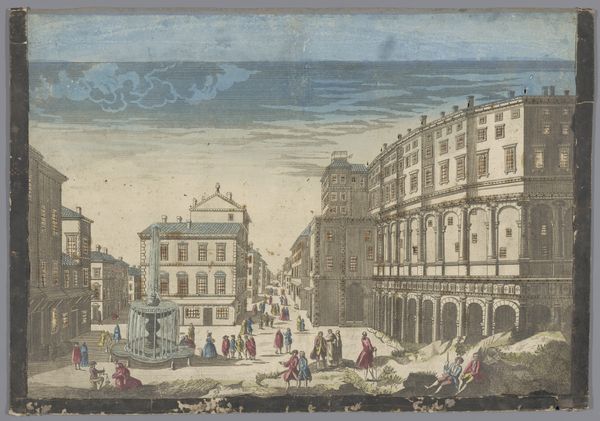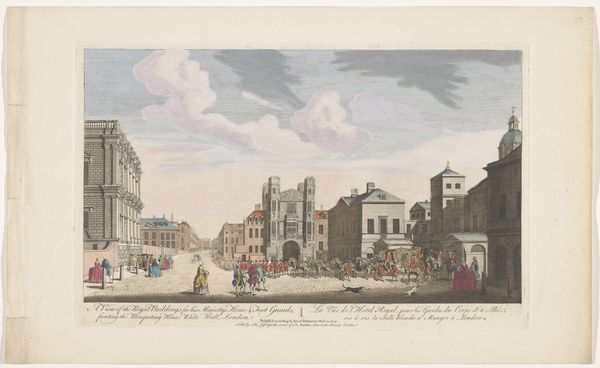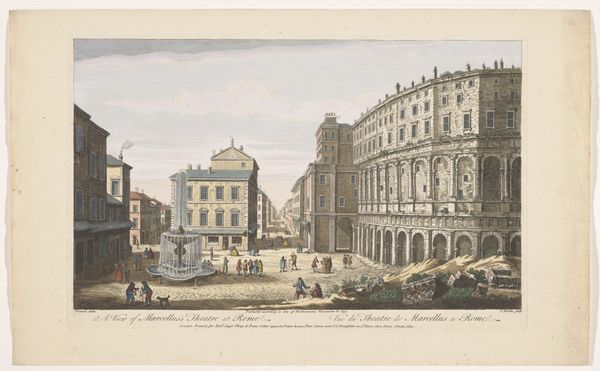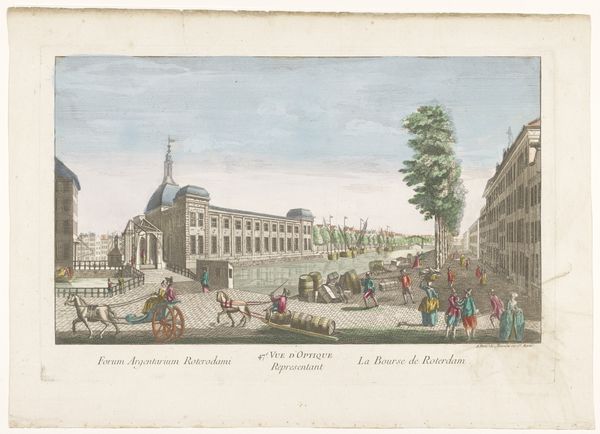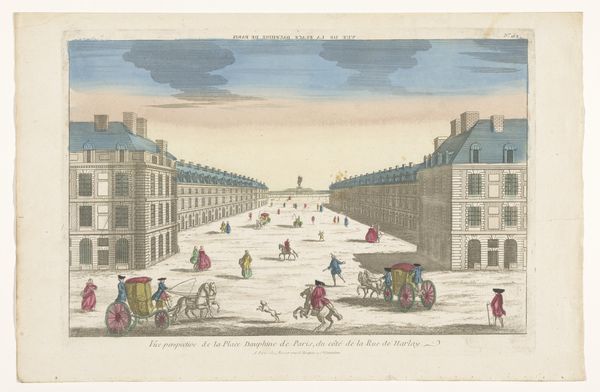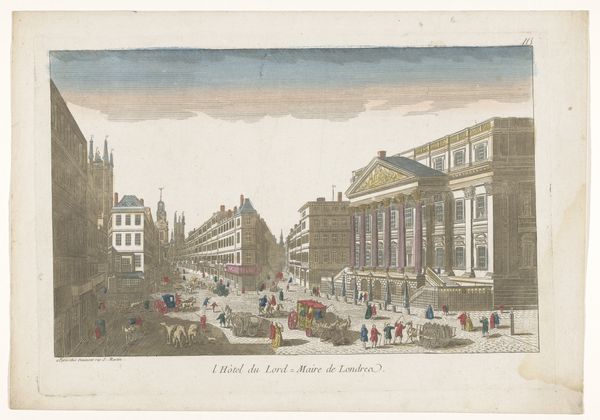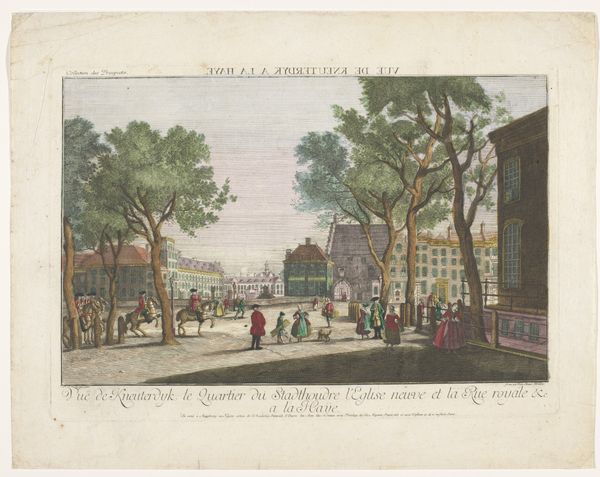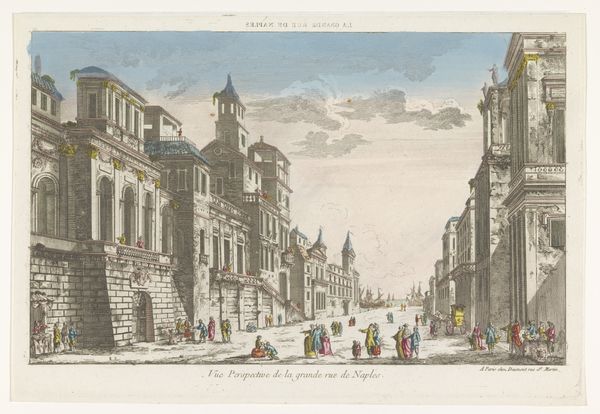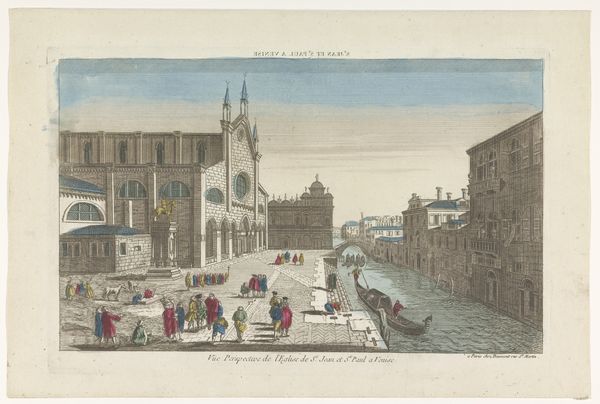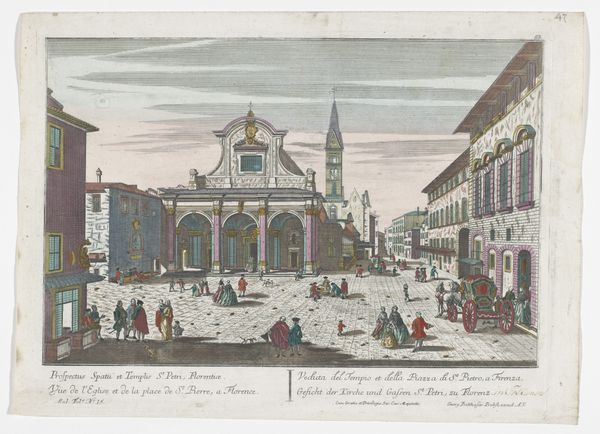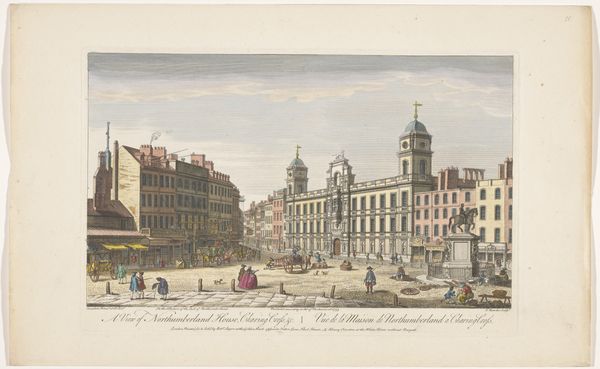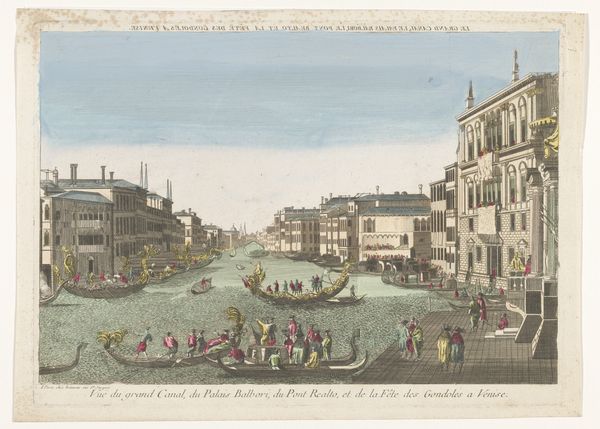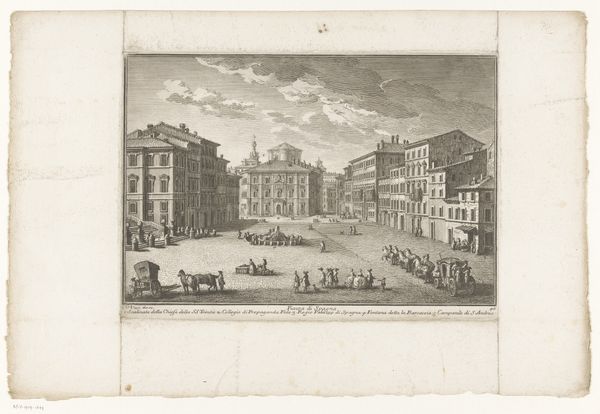
print, etching, engraving
# print
#
etching
#
landscape
#
perspective
#
cityscape
#
italian-renaissance
#
engraving
#
rococo
Dimensions: height 282 mm, width 433 mm
Copyright: Rijks Museum: Open Domain
Editor: So, here we have "View of the Theatre of Marcellus in Rome," an etching and engraving by Jean-François Daumont, made sometime between 1745 and 1775. I’m struck by the way the artist uses perspective to draw you into the city. What do you see in this piece? Curator: Immediately, I notice the Roman theatrical structure coexisting with elements of the everyday. The ancient architecture isn't presented in isolation but integrated into the city's current life. Notice how the figures populate the scene; what symbolic meaning do you derive from them going about their lives, in front of something ancient and crumbling? Editor: Well, I guess they are unaware or perhaps indifferent, and mostly concerned about their own business. The past and present are sort of superimposed, maybe? Curator: Precisely! Consider how the theater, a symbol of Roman power and entertainment, becomes a backdrop, a relic. The human figures represent a continuous narrative. Think of ruins not as dead objects, but places where memories resonate through time and impact the present. Is there something hopeful in this kind of layering of time, where ordinary people are still present in the streets? Editor: I hadn’t thought of it that way, but it does give the image a sense of ongoing life. So the theatre isn't just a ruin, it's part of Rome's, and people's, everyday existence. Curator: Daumont reminds us that the past continues to live in and shape our present; by depicting the Theater, an emblem of public life and entertainment in a state of decay, a new cultural landscape forms which tells stories across generations. What do you think you’ll take away from this image? Editor: I’ll definitely think more about how artists use ancient structures not just as historical markers, but as a lens through which we understand contemporary culture. Thank you.
Comments
No comments
Be the first to comment and join the conversation on the ultimate creative platform.
